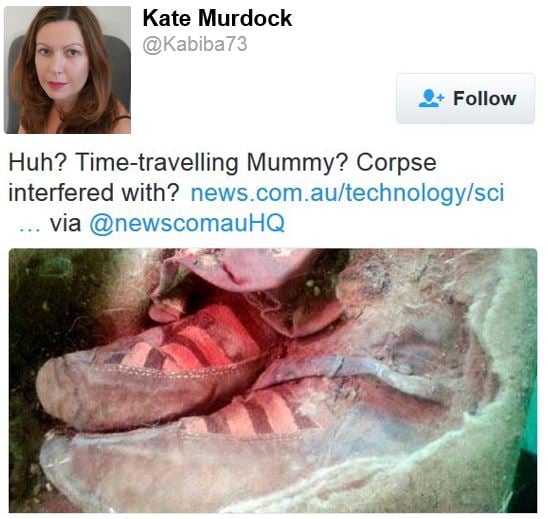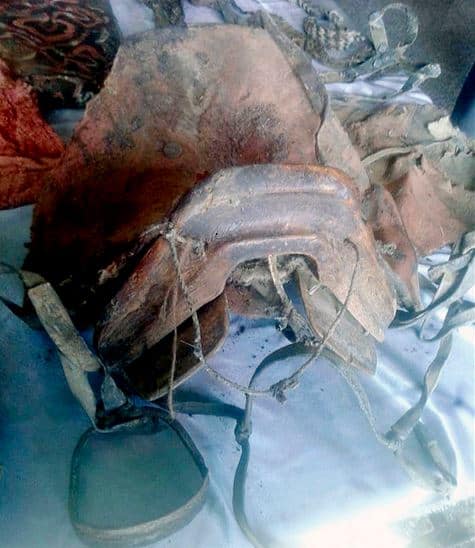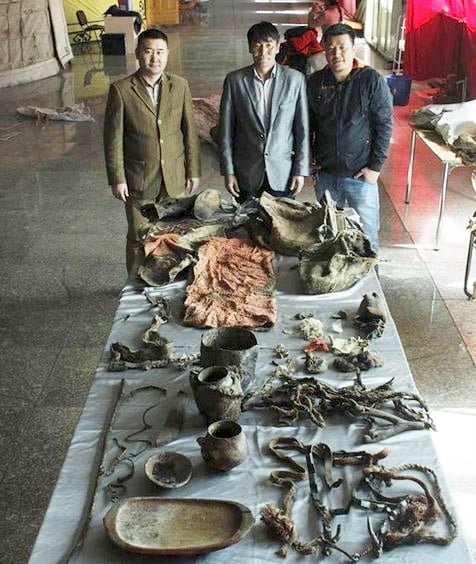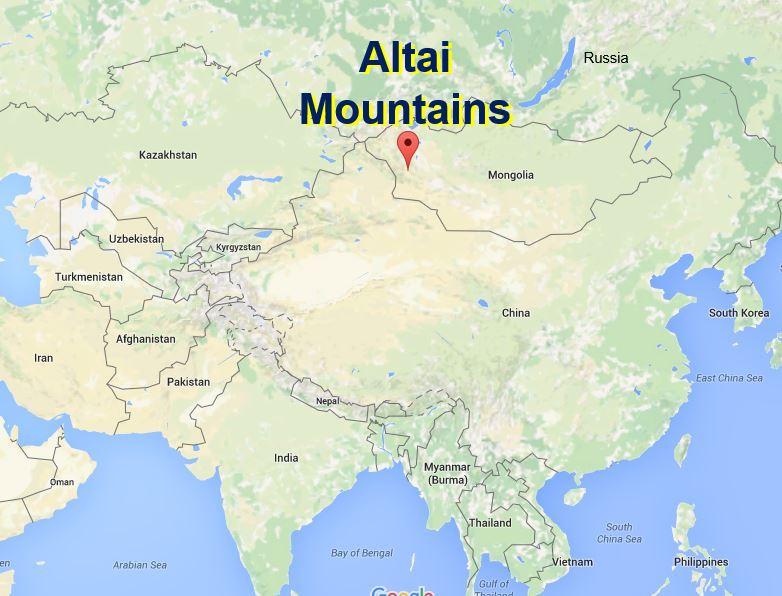After the ancient remains of a Turkic mummy were discovered in the Altai Mountains of Western Mongolia wearing what looked like real Adidas snowboarding boots, the internet has become rife with time travel enthusiasts claiming this is final proof that people have gone back into the distant past and died, only to be unearthed today with items that clearly did not belong to that period.
The ancient human remains belonging to a human who died about 1,500 years ago were wrapped in felt. Archaeologists at the site said their excavation was the first to unearth a complete Turkic burial ground in Central Asia.
 The 1,500-year-old mummy’s boots look very similar to the Adidas snowboarding boots above. Conspiracy theorists are convinced that a modern human travelled back in time. (Image: Khovd Museum)
The 1,500-year-old mummy’s boots look very similar to the Adidas snowboarding boots above. Conspiracy theorists are convinced that a modern human travelled back in time. (Image: Khovd Museum)
How did Adidas boots go back 1,500 years?
Adidas AG, the German multinational sports shoes and clothing company, the world’s second largest sportswear manufacturer, was founded in 1924, i.e. 92 years ago. So, how did a pair of its boots end up in Mongolia 1,500 years ago? That is, of course, if what the mummy was wearing really were Adidas boots.
Several comments have appeared on social networking websites. One Twitter user commented “Must be a time traveler. I knew we would dig one up sooner or later,” while another wrote “Huh? Time-travelling Mummy? Corpse interfered with?”
The Siberian Times quotes Khovd Museum researcher Dr. B. Sukhbaatar, an archaeologist who uncovered the mummy, as saying:
“Now we are carefully unwrapping the body and once this is complete the specialists will be able to say more precisely about the gender.”
Several fascinating artefacts were found in the mummy’s grave, including a clay vase, bridle, saddle, the remains of an entire horse, four different ‘Dool’ (Mongolian clothes), iron kettle, trough, and a wooden bowl.
 Comments on social networking websites ranged from time travel, parallel universes, Adidas has secret technology we know nothing about, to people interfering with the corpse after it was discovered. (Image: twitter.com/Kabiba73)
Comments on social networking websites ranged from time travel, parallel universes, Adidas has secret technology we know nothing about, to people interfering with the corpse after it was discovered. (Image: twitter.com/Kabiba73)
They also uncovered a sheep’s head, a felt travel bag with the whole back of a sheep inside, as well as goat bones, a small leather bag, and some pillows.
Horse had been deliberately sacrificed
Dr. Sukhbaatar added:
“It is the first complete Turkic burial at least in Mongolia – and probably in all Central Asia. This is a very rare phenomenon. These finds show us the beliefs and rituals of Turkics.”
“We can see clearly that the horse was deliberately sacrificed. It was a mare, between four and eight years old. Four coats we found were made of cotton.”
“An interesting thing we found is that not only sheep wool was used, but also camel wool. We can date the burial by the things we have found there, also the type of hat. It gives us a preliminary date of around the 6th century AD.”
The burial site was first spotted by local herdsmen, who alerted archaeologists from the city museum in Khovd, the capital of the Province of Khod, situated at the foot of the Mongol Altay Mountains, on the Buyant River.
 This saddle was found in the grave. Clearly horses and riding equipment were treasured possessions in Mongolia 1,500 years ago. (Image: Khovd Museum)
This saddle was found in the grave. Clearly horses and riding equipment were treasured possessions in Mongolia 1,500 years ago. (Image: Khovd Museum)
Scientists in the area say the finds will give archaeologists and anthropologists a better understanding of the native Turkics who lived in ancient Mongolia.
Altitude helped preserve contents
The burial site is 2,803 metres (9,524 feet) above sea level. The high altitude and cool temperatures helped conserve the contents of the grave, which was three metres (9.84 feet) deep.
Dr. Sukhbaatar said:
“The finds show us that these people were very skilled craftsmen. Given that this was the grave of a simple person, we understand that craft skills were rather well developed.”
 Several possessions which had been placed next to the person who was buried were found in the grave. (Image: Khovd Museum)
Several possessions which had been placed next to the person who was buried were found in the grave. (Image: Khovd Museum)
The Altai Mountains – ‘Altai’ means ‘Gold Mountain’ in Mongolian – are a mountain range in East and Central Asia where Mongolia, China, Russia and Kazakhstan meet.
The Turkic people
The Altai Mountains are believed to be the birthplace of the Turkic people around the 6th century BC.
The ‘Turks’ were first mentioned in a Chinese text which described several tribes, including Turks and Sogdians along the Silk Road.
 The ancient burial ground was discovered in the Altai Mountains. (Image: Google Maps)
The ancient burial ground was discovered in the Altai Mountains. (Image: Google Maps)
The Turkic people had their own language, developed a unique alphabet, and are known for several symbols including the colour blue and wolves. Some historical linguists say the word ‘Turquoise’ comes from the word Turkish.
Modern Turks today live across much of Asia and Eastern Europe.
In 2014, archaeologists found what they think was a grave of a Turkic warrior in the Altai Mountains. During that period, it was customary to bury people with ‘grave goods’ – their treasured possessions – which they would take with them to the next world.
Video – Ancient mummy wearing ADIDAS boots?
